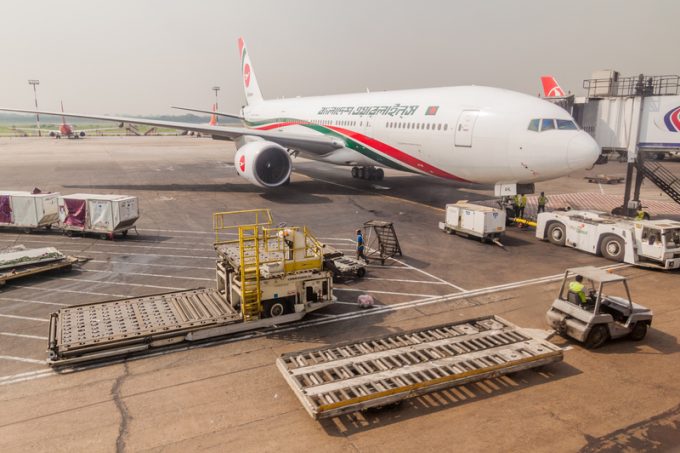Panama auditor recommends legal action over Hutchison contract
Panama’s comptroller has recommended that the country’s government sue civil servants who signed-off the 25-year ...

A capacity crunch, caused by the suspension of international passenger flights, has increased air freight rates out of Bangladesh by up to 30%, with a particular rise in Dhaka-US lanes.
As the Covid-19 situation worsened, Bangladesh’s government enforced a ‘hard-lockdown’ on 14 April and, since then, all regular passenger flights have been suspended.
About 65% of all air freight out of Bangladesh is carried on on passenger aircraft, according to Kabir Ahmed, president of the Bangladesh Freight Forwarders’ Association, and he says there are no ...
'Disastrous' DSV-Schenker merger would 'disrupt European haulage market'
'Chaos after chaos' coming from de minimis changes and more tariffs
List of blanked transpac sailings grows as trade war heats up and demand cools
Shippers in Asia restart ocean shipment bookings – but not from China
Forto 'sharpens commercial priorities' as it lays off one-third of staff
India withdraws access for Bangladesh transhipments, in 'very harmful' decision
'Tariff hell' leaves industries in limbo – 'not a great environment to plan'
Temporary tariff relief brings on early transpacific peak season
Pre-tariff rush of goods from US to China sees air rates soar, but not for long
Asian exporters scramble for ships and boxes to beat 90-day tariff pause
De minimis-induced ecommerce demand slump could cripple freighter operators
Forwarders 'allowing the fox into the chicken run' by supporting 'hungry' carriers
Hapag 'took the bigger risk' when it signed up to Gemini, says Maersk
'Restoring America's maritime dominance' – stop laughing at the back of the class
Navigating tariffs: 'like trying to solve a Rubik's cube while colour-blind'

Comment on this article